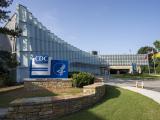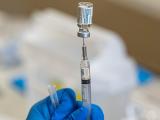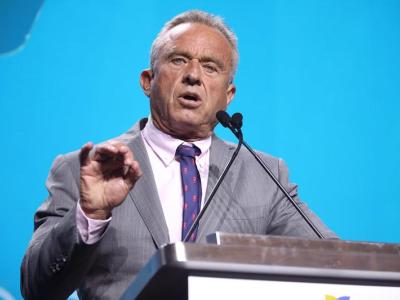Sep 9, 2009 (CIDRAP News) – Just as this year's early seasonal influenza immunization drive is getting under way, some vaccination providers are having trouble getting vaccine doses, the Centers for Disease Control and Prevention (CDC) reported today.
A CDC notice that was forwarded to members of the National Influenza Vaccine Summit (NIVS) said, "Providers seeking to order vaccine currently and during the past several weeks have experienced challenges in doing so."
The notice said the estimate of total seasonal vaccine production has been lowered slightly—from 118 million doses in late June to 114 million or 115 million now, or about 3%—but it did not describe this change as the sole or main factor in the difficulty.
In late June, the notice said, one vaccine manufacturer lowered its vaccine production estimate, causing some providers to switch their "prebooked" supply orders to other manufacturers. As a result, some doses that are normally available in summer or early fall are off the table.
In addition, the CDC said, more providers than usual may be trying to get vaccine at this time of year, because of the H1N1 flu pandemic. Media coverage of H1N1 and the desire to complete seasonal flu immunizations before H1N1 vaccinations begin may have combined to boost demand for seasonal vaccine.
The first doses of H1N1 vaccine are expected to become available in mid October. To make way for the H1N1 vaccination campaign, public health officials have been urging people to get their seasonal flu shots early, and vaccinations have begun in many areas.
During an NIVS teleconference today, the CDC's Dr. Jeanne Santoli suggested that the seasonal vaccine supply is likely to improve as the season wears on. The NIVS, cosponsored by the CDC and the American Medical Association (AMA), involves more than 400 people from about 100 public and private organizations interested in resolving flu and flu-vaccine problems.
"Some [vaccination] providers book more than one product but are not intending to buy both, so some prebooks don't materialize into purchases," Santoli said. "So providers should continue to use the supplies they have and then look for opportunities to order additional vaccine as the season goes on."
"I wish we could say more to people who want to buy vaccine and right now can't buy the vaccine they need," she said, but added that the situation is expected to improve with time.
During the teleconference, which included time for questions, a woman involved in occupational health said vaccination providers in that field are having to postpone vaccination clinics because they can't get vaccine.
"Many of our group prebooked [vaccine] back in March, April, May, and June but are being told by distributors that manufacturers are shipping only about 50% of their orders, and very little vaccine is moving to the occupational health market," she said. "Vaccinators are rescheduling programs that were scheduled over the next several weeks."
Santoli replied that production estimates "haven't changed radically, certainly not 50%," adding that she couldn't explain the situation.
She said the CDC hasn't heard of "any significant delays that are on the horizon" for seasonal vaccine production. A little more than 30 million doses of vaccine had been distributed as of Aug 28, she added.
"We were expecting that vaccine would be ready in the August-September and somewhat of the October time frame; we don't have any manufacturers that were significantly off that," Santoli said.
Dr. L.J. Tan, the AMA's infectious diseases director, who moderated the teleconference, said an earlier prediction was that 50 million doses would be distributed by the end of August, "so this clearly indicates a slight delay in terms of that number."
On the other hand, he said, "having 30 million doses by August 28th is really quite remarkable."
See also:
NIVS home page
http://www.preventinfluenza.org/nivs.asp




















